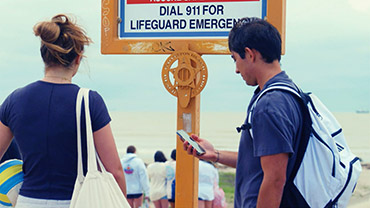Are you ready for changing ocean conditions? Discover why your swimming ability needs to match the demands of the waters around you.
Transcript
Bruckner Chase (Host):
They are some of the best in these waters, and to most of us, these waters will look and feel familiar. But these waters are a different story. Every beach can have its own potentially dangerous conditions and challenges. Just swimming here is a completely different sport.
In the ocean, your swimming ability has to match the demands of the weather, waves, and currents surrounding you. Even if you're great in the pool, you may not be ready for the ocean.
Fast or slow, currents can be relentless and deadly, whether pulling you into deeper water or dragging you along the beach into dangerous areas.
Gradual changes can be the most dangerous. You may not recognize what's happening until you have a long fight back to safety.
Caught in the current? Just relax. The direction of the current — and not the position of the beach — matters most. For any current, first swim perpendicular — or at an angle — to the direction it's moving you. When you no longer feel or see yourself being moved by the current, you can now swim straight to the beach.
If you can't swim back on your own, relax. Float on your back and wave towards shore. This will give professional rescuers the time they need to help you get back to safety.
Can you easily swim a length of the pool? If you were in trouble, swimming that same distance in the ocean with currents and crashing waves can feel impossible. A short distance swim to get out of a current is not the same as swimming up and back in a pool.
If you don't know how your ocean swimming stacks up, don't go.
Got a minute? Watch another Blue IQ video to learn more and stay safe at the shore.
 An official website of the United States government.
An official website of the United States government.




